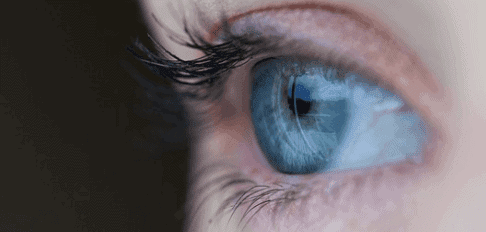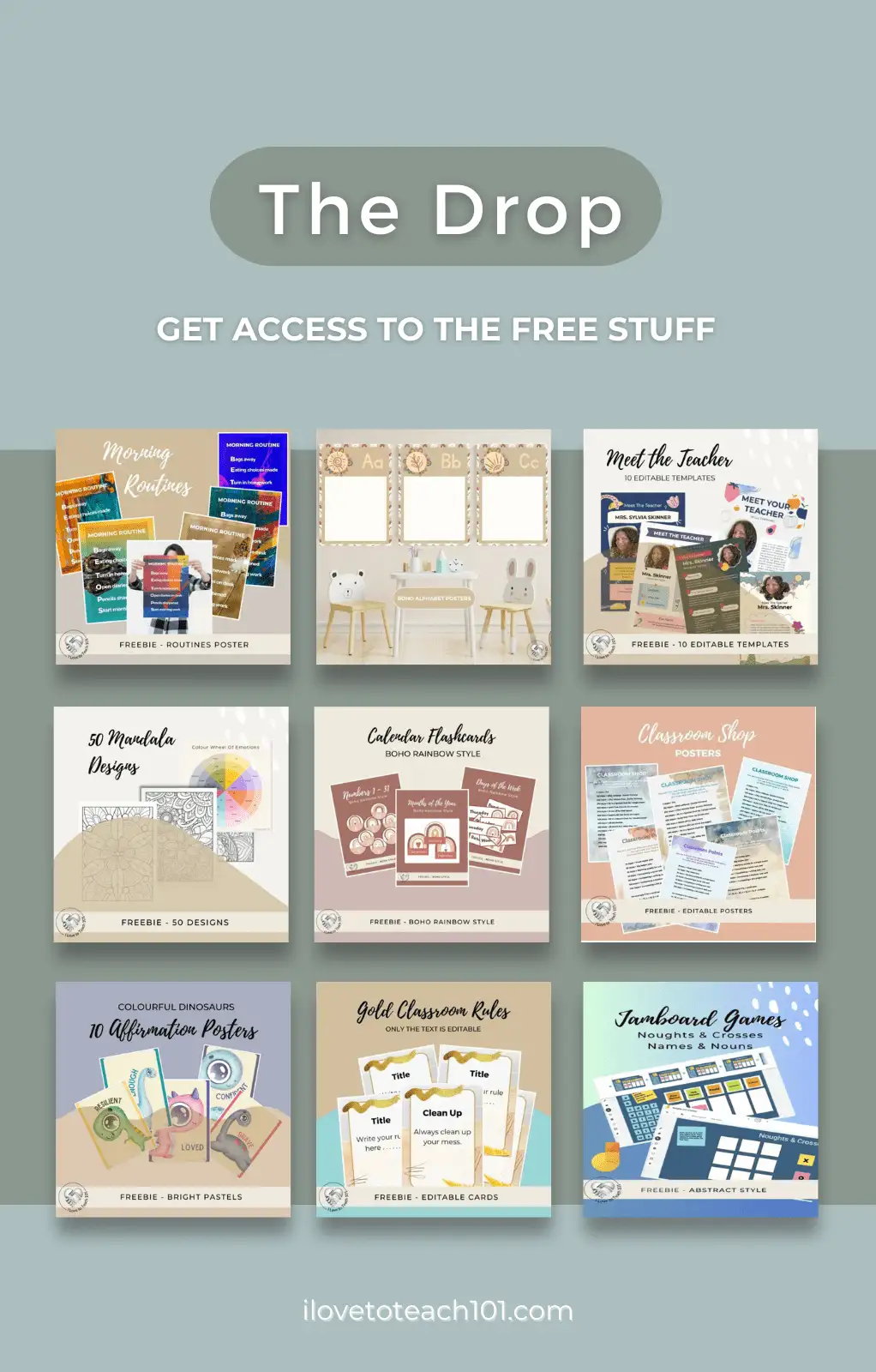
Brain based learning strategies are innovative, engaging, and at the cutting-edge of teaching methodology.
Brain based learning strategies combine psychology, technology and neurology for actively teaching students in a way that keeps a diverse body of students engaged while enriching the learning environment and student understanding.
It does NOT take away from what teachers know but helps us modify what we know, so we can be more effective in meeting all our student’s needs.
My ebook describes 10 brain based learning strategies to engage students, which can be easily memorised using Hileman’s acronym.

Download and implement all 10 strategies. They are super easy to implement. All you have to do to access the ebook and other FREE resources, is join the ILTT Tribe. It’s FREE to join and we add at least one FREE resources per month.
When the bell rang for the geometry class that day, Sophia was on the verge of tears. She had failed her geometry. The marks were way below what she had ever gotten in geometry class.
It was an F. She had tried her level best. The amount of time she spent revising was double the effort. Tiana, on the other hand, had aced the test. They had studied together for the test and were the best of friends.
Sophia excelled in her co-curricular activities, and hockey was her favourite. She was captain of her team. But her G.P.A (Grade Point Average) needed serious work.
Mrs Jones, her Geometry teacher, was curious to know what activities Sophia engaged in after school. Mrs Jones was shocked when Sophia confessed that she buried her head in books in her room as soon as she got home.
She admitted that other times if there were visitors at home that did not require her attention, she went to the local library to do her reading or met up with Tiana after school to go over a concept that she did not understand.
She confessed that she was exhausted almost every single minute of the day. She began crying. It was clear she was frustrated.
Mrs Jones realised she needed to implement a brain based learning strategy and quickly recommended that as soon as Sophia got home, she should rest. She also suggested that Sophia take time off books, limit her homework time to one hour and indulge in other refreshing activities. Explaining the need to give her brain time breaks.
She quickly made a mental note to alert other teachers that Sophia be given some extra time for breaks between lessons for a while.

We’ve all been there before: after a long day of work or learning, we feel burnt out, tired and fatigued – even if the day comprised of sitting in the office or classroom. Students experience this too, especially after long school days.
But why does this mental and physical fatigue happen even when students are seated quietly at desks, with little to no physical exertion?
Let’s look at the science of sleep. The human brain runs on cycles called ultradian rhythms. An ultradian rhythm is a recurring cycle repeated throughout the 24-hour day, closely linked to circadian rhythms that influence our sleep cycles based on the natural environment around us.
Ultradian rhythms, unlike circadian rhythms which cycle once a day, cycle much more rapidly – once about every 90 to 120 minutes!
So, if students are passively learning for hours on end, their ultradian rhythms are being worn out. The expectation that they are always at attention and engaged in passive or lecture learning is counterintuitive to how the brain works.
In fact, it is these ultradian rhythms being overworked that often contribute to brain fatigue and “burn out.”

It is recommended that passive learning be taught for no more than 12 to 15 minutes at a time and be varied properly with instructional learning.
For example, lecturing for 12 to 15 minutes is okay – but hours on end will leave students tired. In the meanwhile, instructional learning can be used to engage students in step-by-step or hands-on material.
This means pausing both instructional and passive learning and invigorating the brain with physical or creative activities.
“Unplugging,” however, doesn’t include allowing for time with electronics.
Students shouldn’t be checking their phones during these breaks but should aim for an activity that engages them both physically and mentally. Using a phone, laptop, tablet, or other electronic devices can derail the 90 to 120-minute break.
Ultimately, students are humans. Humans are living beings – we function in cycles, like how birds fly south for the winter, or how whales swim across the worlds’ oceans with their young.
On a much smaller scale, implementing an understanding of ultradian rhythms in the classroom is one way that the human brain – and body – can become functional parts of the learning process, without the brain fatigue or “burn out.”
The repetition strategy for brain based learning had to be implemented by all means. It was crucial to repeat concepts through varying methods. This had to be done to increase the retention rate.
They needed to revise the 3Ps and 2Rs methods that they had been introduced to which translated to, Pre-exposure, Previewing, Priming, Reviewing and Revising.
There was a major problem in the school. Sophia was not the only child that Mrs Jones was concerned about. There were others like Sophia, and there were very bright students in the same class.
As a teacher, their code of ethics barred them from labelling a mentally and physically fit child as unfit to teach. Their method of teaching had to be reviewed and adhered to religiously. There was nothing impossible. No child was beyond teaching. All they required was attention.

You don’t want to repeat material until it becomes redundant and boring, distracting from student attention and productivity. However, it is also unlikely that a student will learn the content once and be able to accurately and fully remember that information forever, or even until the exam.
The success of this brain based learning strategy can be accomplished in different ways to strengthen connections in the brain. In fact, the brain remembers information best when it is repeated in multiple ways.
In presenting the information in multiple ways, the medium of the presentation is important. Video, images, charts and infographics are all productive mediums for repetition.
If information is shown in a video, then in text and images, in analytical charts, students will have different methods of grasping on to the information; their brains will also be reinforcing the information by strengthening connections.
Rehearsal of information increases retention since the brain rarely understands information the first time it encounters it. As Educators, we can improve this rehearsal by scheduling how the material is presented.
This presentation of information shouldn’t be timed at exact intervals. It should happen at gradually lengthening intervals, to exercise further and reinforce brain connections.
Properly spacing out the priming, reviewing, and revising periods is a good method to promote the beneficial practice of this brain based learning strategy.
Pre-exposure: By providing preliminary information about the topic in advance, students can prepare for the content and begin to make inferences. Something as simple as providing a syllabus can begin pre-exposure!
Previewing: An overview of the information at the beginning of the lesson will introduce the student to the information, without overloading them. The preview should be clear and concise.
Priming: This is the primary lesson or the direct teaching of information. This is where more detail, nuances and facts are provided in the information.
Reviewing: Now that the lesson has been covered, coming back and repeating the information becomes essential. Reviewing can be for an exam or assessment, especially to present the informative details taught beyond the initial overview.
Revising: After the lesson has been taught, educators can occasionally check that students have learned the material correctly, and for the long term.
Their literature teacher had picked Ariana to play Juliet’s role in the famous Shakespeare’s book Romeo and Juliet. At the same time, Randal had been given the role of Romeo.
Ariana particularly found literature to be an unconquerable giant. She was having problems coming up with the various themes in the book and even the tone. Who used such a style in the 21st century?
But she had no choice. She had to learn and understand the text. She approached Tiana and requested her to help her rehearse. Tiana and Sophia were more than ready to help her with her lines.
The deadline was approaching fast, and on Monday, she would role play. She was excited and nervous at the same time, but the girls helped her a lot. When Monday came, she was no longer so scared. When she started saying her lines and also owning her character, she found it to be enjoyable. Her mental performance had been strengthened.
Acting to be Juliet was not only physically stimulating, but she was glad that she could recall the lines. The role needed her to turn around, swiftly, fast, and be in sync with her lines. Their literature teacher was excited as she observed the play unfold.

Contrary to the thought that learning is only a mental process, students who engage in physical activity while learning can actually strengthen their mental performance.
Educators who push students to be active in the classroom aren’t just improving physical health – they’re adding sensory stimuli that can improve students’ memory and retrieval while reinforcing information.
It’s a very intuitive fact that students who have healthy bodies will do better in the classroom. If a student is well-fed with a balanced diet and is not sick, they will have a better attention span and will participate more in class. However, physical fitness classes once every few days aren’t enough.
It is recommended that people should try to get anywhere between 60 minutes and 120 minutes of physical activity a day. Spending an hour to two hours being active can seem like a difficult feat when students are spending the majority of their days in the classroom or doing homework.

When Sensory Stimuli are added, they raise blood pressure and levels of epinephrine (also known as adrenaline). This can reduce drowsiness and restlessness while also reinforcing information.
Engaging in physical performance in the classroom can take on many forms: role play, acting, energising discussions, and games that make the students get up from their desks is all part of brain based learning.
Getting students outside the classroom is important too. If a lesson can be taught outdoors or has applications to the natural world, students can benefit from the novelty of a different environment. In the natural light, they also will be producing more vitamin D, which can help improve brain function.
Active learning can be especially beneficial for students with learning disabilities, such as ADHD who experience hyperactivity and have difficulty paying attention.
Furthermore, adding the dynamic change of physical movement to the classroom can be tied into the brain based learning repetition strategy.
Tiana’s favourite subject was ICT. The joy of seeing technology in action was beyond explaining.
Aided learning was what she mostly used. Attempting quizzes and getting her score was one of the activities she loved about these questions. If she missed a question, the expert system had been set in a way to offer the correct answer, and not only that, it had explanations.
She did not need to wrack her brains to know what something looked like. If it was not found locally, there was the internet. Their ICT teacher had shown them how to search for helpful information online effectively. She smiled as she blessed her teacher in her heart.
Other students felt the same; looking at images, watching documentaries, and embossing a picture in your mind was one of the most incredible ways of recalling concepts. Sophia was quickly adapting to this challenge, and impressively her Grade Point Average (GPA) had begun having an upward trend.
Their ICT teacher understood from brain based learning strategies the importance of images. He was smart enough to give his students the freedom they needed to discover how devices made from integrated circuits were different from those that ran on magnetic energy and optical energy. It was always fascinating to watch them as they discovered all these on their own.

Of all the information that the brain absorbs about 80 to 90% of it is visual, through our eyes.
Humans are extremely receptive to visual cues and store visual memories with faster recall more than any other form of stimuli, be it auditory, tactile, or something else.
Of the five human senses – taste, touch, sight, smell and sound – sight is how we observe the world around us, and make sense of taste, touch, smell and sound.
For example, sight is how we know the food we are tasting is an apple, how we know that clothes are touching our skin, how we know that the horrible smell in the air is a nearby skunk, or how the music playing is coming from computer speakers. Sight is the most essential of the senses; without it, it is challenging to navigate the world around us.
Based on this information, it is clear that adding visual imagery to the classroom is a massive part of brain based learning.
By showing students imagery-driven information, that information is stored in their long-term memory, which makes for faster and easier recall. Visual information helps make sense of the content and directs students’ attention to important information.
Handouts and text material can include graphics and diagrams, or pictures that demonstrate the text material. Infographics are also an effective way to explain information with visual cues since they typically formulate information into a conclusion.
Videos, especially shorter clips that reinforce a single topic, aren’t just fun for students to watch – they present one topic with changing stimuli, including the sound that activates students’ long-term memory.
Another way to activate visual memory is in the physical classroom itself. Not only does a bright and colourful classroom, fruitful with information, create a positive emotional environment for students – by adding posters and pictures on the walls with relevant information or applicable imagery, but students will also absorb the world around them and process through memory and emotion.
Younger students may learn best by absorbing many images. Older students, who can make cohesive sense of images that tie into text or infographics, can benefit from making these connections from imagery to context. By reinforcing ideas from imagery to information, brain synapses are being reinforced likewise.
Sophia’s history teacher noticed an improvement in her history grade towards the end of the term as they neared their summer break. Earlier in the term, they had visited the White House. She had never seen the students that excited. They were awed by the beauty of the statehouse. The highlight was when they were given a sneak peek of the oval office.
Sophia was beside herself with elation. She was so attentive. No amount of classwork would be able to explain the thrill of what she saw. The experience was for a lifetime, and although their history teacher had tried as best as she could to explain the White House to them, none of the explanations came close to what they were seeing. That trip was something.
Seeing it in real life was all they needed. The presence of the secret service agents was exciting, with their suits, their headphones, their routine, courtesy, alertness and professional behaviour. Their history teacher was quite positive that their dopamine levels had spiked a great deal.

The freshness of a new school year motivates students to work hard in the first few weeks – but this enthusiasm often drops off later in the semester.
Similarly, students may be motivated at the beginning of a new lesson to tackle the information with vigour, but want to move onto the next lesson soon after.
Ever wonder why the newness of information adds motivation to students to succeed? When students see something new, the novelty of the information motivates them to learn more.
Why?
The answer can be found in dopamine levels, the neurotransmitter linked to motivation-reward thought as well as pleasure.
When new information is presented, dopamine levels spike!
This is because the brain believes that the new stimuli have the potential to bring them a reward, so the person is more motivated to work for that reward.
For educators, it can be hard constantly to present the same information in new ways. However, creative applications to learning can create novelty around the content of a lesson.
New examples of material application, a surprise of new data or scenarios, or engaging students in unfamiliar situations to learn the content can all provide novelty. The classic “field trip” can even play into brain based learning, as seeing the lesson information in a real-world application outside of the classroom provides novelty to information.
Whether or not the student receives a tangible “award” for learning something, or not, does not factor into dopamine levels. A good grade or positive reinforcement from a teacher can be enough for students’ motivational levels to keep up. In keeping information fresh and presented in creative ways, students will remain motivated throughout the lesson.
Much of what we know about the human brain and its functions has only been developed within the past fifty years.
The left brain / right brain theory, in which the left brain is analytical and logical, while the right brain is visual and intuitive, was not developed until the 1960s and is still being researched today.
Hey, you can read the rest of this Nerdy science chapter and ALL ten brain based learning strategies in a FREE copy of my Brain Based Learning eBook.

Download and implement all 10 strategies. They are super easy to implement. All you have to do to access the ebook and other FREE resources, is join the ILTT Tribe. It’s FREE to join and we add at least one FREE resources per month.
https://globaldigitalcitizen.org/10-benefits-brain-based-learning-instruction
https://blog.cognifit.com/brain-based-learning/
https://www.simplypsychology.org/naturevsnurture.html
https://www.healthline.com/health/left-brain-vs-right-brain#left-brainright-brain-theory
https://www.fastcompany.com/3013188/why-you-need-to-unplug-every-90-minutes
https://onlinelibrary.wiley.com/doi/abs/10.1002/0470018860.s00495
https://www.ncbi.nlm.nih.gov/pmc/articles/PMC2588649/
https://www.edutopia.org/video/what-social-brain
https://qbi.uq.edu.au/brain-basics/brain-physiology/adult-neurogenesis
https://www.brainhq.com/brain-resources/brain-plasticity/what-is-brain-plasticity/

The Benefits of Brain Based Learning and Why Every Teacher Needs to Rethink How They Teach, by Julie Schoen – published on Medium
By keeping The Benefits of Brain Based Learning Strategies in your “toolkit”, you commit to the idea that there is a smarter, healthier, more effective way to actually teach the students in your classroom. And, in doing so, your role as a teacher isn’t just relegated to the one-dimensional realm of “giver of information”. Instead, you become an invaluable mentor, someone who your students will remember, and thank, for years to come.

Each month we add at least one FREE teacher resource exclusively for ILTT members.
To access now, join ILTT today!
Membership is free and you can unsubscribe anytime.